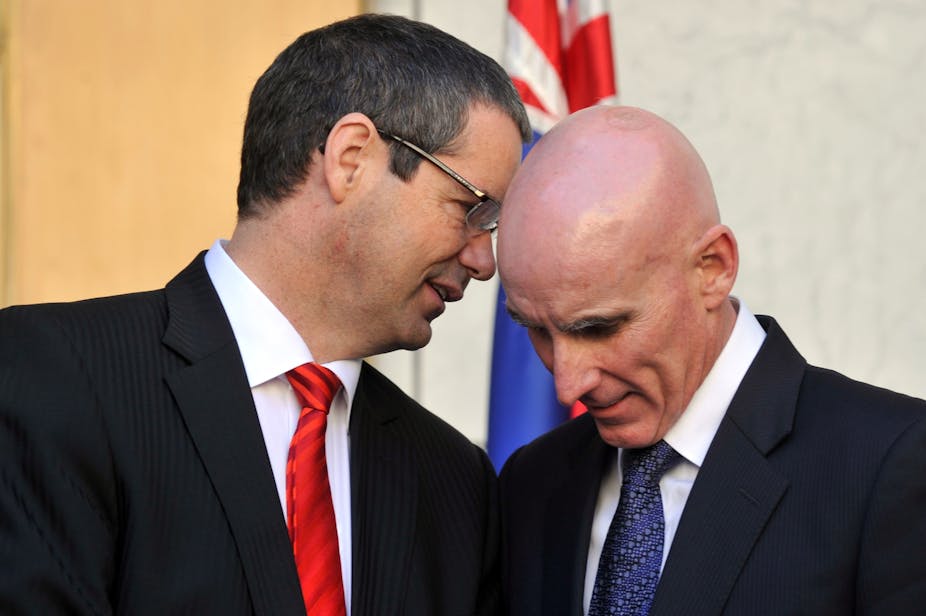The $1.4 billion cost blowout reported by the NBN Co last week has focused attention once again on the seemingly regular occurrence of large government infrastructure projects being delivered late and over budget.
Whether we look at the much touted Public Private Partnerships (PPP) frameworks championed by state and federal governments of all persuasions, or in the NBN Co. case, a government monopoly engaging with the private sector, the cost to the taxpayer invariably appears to be greater than first estimated.
Why might that be? Is it that we are systematically poor (in one direction) at estimating future costs? Or do political realities and parameters change? That there is a lot of risk and uncertainty in the world around us is certainly true, but why must it always be the case that the taxpayer is left with the “bill”?
Surely there must be something wrong with our government’s existing tendering and contracting processes that leads to this repeated occurrence. And there is. An alarmingly lack of both good governance and contract design, principles that we expect of the corporate sector, are only cursorily considered in the public sector.
Let’s deconstruct the problem a bit further. The most efficacious delivery of large infrastructure (and other government projects) will almost always involve some private sector engagement. The challenge is to garner that engagement on terms that create societal value.
The tendering guidelines that most public sector entities adopt recognise the value in harnessing competition. Recourse to elementary microeconomics suggests that competition amongst potential bidders “for the market” (that is, to win the right to have some monopoly power) will result in the same efficiency outcomes as competition “in the market”. The problem, in almost all real world contexts however, is what economists refer to as an “asymmetry of information”. If one side of the market - in this case the bidders (or worse yet, only some bidders, so we don’t even get the real positive effects of competition) - have information about the likely outcomes (costs/benefits etc) and the other side (the government) doesn’t, then we would expect the informed party to appropriate more of the rents.
Which is exactly what we observe when cost blowouts occur.
So, how can we resolve this inherent and systemic problem? Firstly, competition for the market (that is the terms on which government tenders are constructed) needs to be much more transparent.
Potential bidders need to be able to have equal access to information and the “commercial in confidence” veil needs to be tempered for the public good. Simply having many bidders involved in a tender, if they are not privy to the requisite commercial information, will not yield competitive outcomes.
Too often, government tenders satisfy a very rudimentary definition of competition, without significant thought in the design of the tender to ensure real competition takes place. Efficient, well designed government tenders are about good governance.
Secondly, and more importantly, we need to be much better at contract design where there is a large deal of uncertainty about future outcomes. The way much of the government contracting currently takes place, despite the political rhetoric to the contrary, is that the residual or contingent risk always sits with the state.
This need not necessarily be the case. Getting the right balance of incentives that mitigate any cost over-runs, and ensure a viable commercial return to the private sector requires much more detailed tender and contract design than currently takes place. Payments for outcomes that capture risk and uncertainty are a staple of financial markets and business to business interactions.
Yet, government to business interactions seem to be devoid of the same detailed considerations. Not surprising, then, that time and time again, our political masters tell us that they have negotiated a great deal with the private sector, only to find that the realised costs are often way more!
The risky uncertain world in which governments attempt to deliver infrastructure and other social projects with private sector involvement necessitates a complete revamp of our tendering and contracting methods.
We need to design systems that harness competition by mitigating the risks of asymmetries of information, and contracts that allow for risk and uncertainty to be shared.
Unfortunately, to date, political expediency has trumped sound economic analysis and design. There is unlikely to be too much consternation from the private sector as a result of the latest cost blowout in a government tendering process, but an informed citizenry ought to be demanding much better from its political masters.
Because if we don’t we will continue to be left with the bill. And it will always be more than we were initially told it would be.

